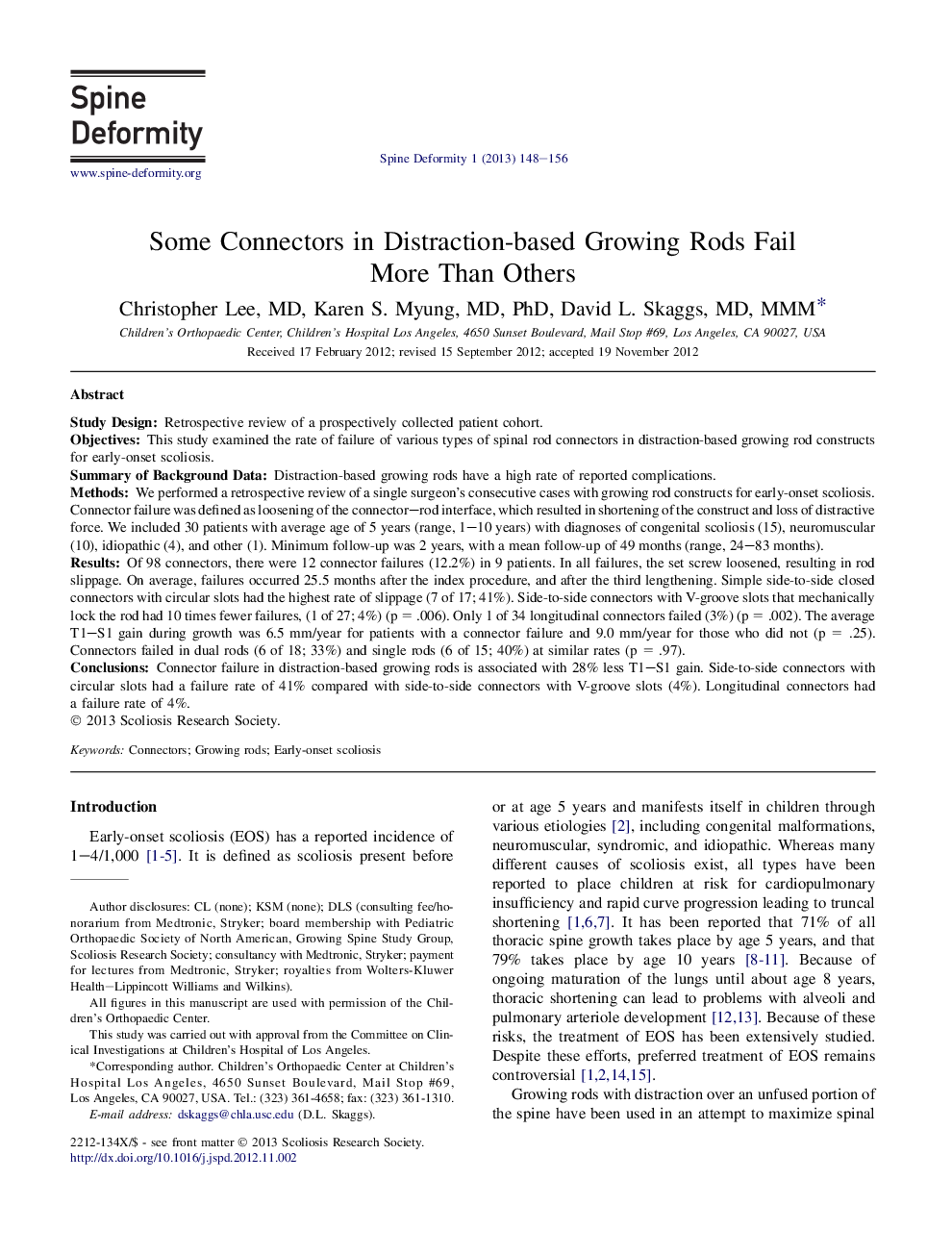| Article ID | Journal | Published Year | Pages | File Type |
|---|---|---|---|---|
| 4095592 | Spine Deformity | 2013 | 9 Pages |
Study DesignRetrospective review of a prospectively collected patient cohort.ObjectivesThis study examined the rate of failure of various types of spinal rod connectors in distraction-based growing rod constructs for early-onset scoliosis.Summary of Background DataDistraction-based growing rods have a high rate of reported complications.MethodsWe performed a retrospective review of a single surgeon's consecutive cases with growing rod constructs for early-onset scoliosis. Connector failure was defined as loosening of the connector–rod interface, which resulted in shortening of the construct and loss of distractive force. We included 30 patients with average age of 5 years (range, 1–10 years) with diagnoses of congenital scoliosis (15), neuromuscular (10), idiopathic (4), and other (1). Minimum follow-up was 2 years, with a mean follow-up of 49 months (range, 24–83 months).ResultsOf 98 connectors, there were 12 connector failures (12.2%) in 9 patients. In all failures, the set screw loosened, resulting in rod slippage. On average, failures occurred 25.5 months after the index procedure, and after the third lengthening. Simple side-to-side closed connectors with circular slots had the highest rate of slippage (7 of 17; 41%). Side-to-side connectors with V-groove slots that mechanically lock the rod had 10 times fewer failures, (1 of 27; 4%) (p = .006). Only 1 of 34 longitudinal connectors failed (3%) (p = .002). The average T1–S1 gain during growth was 6.5 mm/year for patients with a connector failure and 9.0 mm/year for those who did not (p = .25). Connectors failed in dual rods (6 of 18; 33%) and single rods (6 of 15; 40%) at similar rates (p = .97).ConclusionsConnector failure in distraction-based growing rods is associated with 28% less T1–S1 gain. Side-to-side connectors with circular slots had a failure rate of 41% compared with side-to-side connectors with V-groove slots (4%). Longitudinal connectors had a failure rate of 4%.
